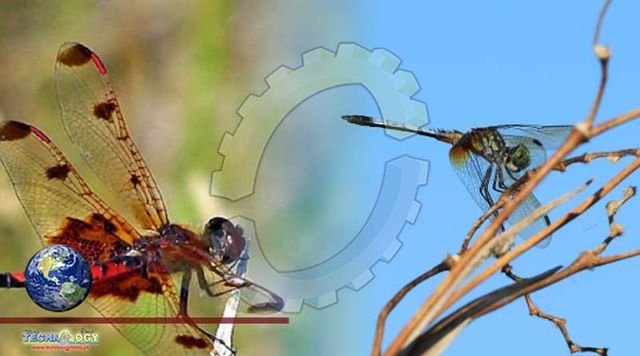Dragonflies are a sight to behold, with their stretched body, massive wingspan, and iridescent colors. Their uniqueness extends beyond their appearance: being one of the world’s oldest insect species, they were an early pioneer of aerial flight.

Dragonflies fly by moving their four wings separately utilizing muscles beneath their exoskeleton. This enables them to hover, fly backward, and make rapid turns. Their incredible mobility in the air is what makes them such effective hunters.
team led by Jane Wang, a mechanical engineering and physics professor in the College of Arts and Sciences, has untangled the sophisticated physics and brain mechanisms that allow dragonflies to correct themselves while falling. The study reveals a series of systems that begin with the dragonfly’s five eyes and progress via its muscles and wing pitch. The team’s research, “Recovery Mechanisms in the Dragonfly Righting Reflex,” was published in Science on May 12th, as per ScienceDaily. The work was co-authored by Wang, James Melfi, Ph.D., and Anthony Leonardo of the Howard Hughes Medical Institute (HHMI) in Ashburn, Virginia.
Wang has spent the last two decades studying the physics of insect flying using extensive numerical simulations. Insects are the most numerous species, and they were the first to discover aerial flight. And dragonflies are among the oldest insects, according to Wang. Trying to figure out how they correct themselves in the air would teach us about the origins of flying as well as how animals acquired neuro-circuits for maintaining in the air and navigating across space.
Wang began working on the study some years ago as a visiting scientist at HHMI’s Janelia Research Campus, where her partner Leonardo was 3D-tracking dragonflies in a vast arena. Wang was encouraged to investigate them more. Wang observed that, unlike humans, dragonflies could evaluate their uprightness using their two visual systems: a pair of huge complex eyes and three simple eyes called ocelli. She put her notion to the test by painting over a dragonfly’s eyes and repeated the experiment. The dragonfly had far greater trouble recovering mid-flight this time.
Wang believes that the trials show that vision is the primary and most important mechanism for the dragonfly’s righting response. This visual cue sets off a chain of reflexes that deliver cerebral signals to the dragonfly’s four wings, which are powered by a set of direct muscles that regulate the left-wing and right-wing pitch asymmetry correspondingly. A tumbling dragonfly may rotate 180 degrees and restart flying right-side up with three or four-wing strokes. The complete procedure takes around 200 milliseconds, as per Meadowia. The crucial wings, on the other hand, are constantly present. They are neatly wrapped into little wing buds that sit on the dragonfly nymph’s back.
Only after the juvenile dragonflies crawl out of the water for the first time and break free from their skin can they spread their wings. Dragonflies cling to the husks of their former self and must patiently wait for their wings to develop and stiffen. This is a particularly perilous phase for the insect since the wings can quickly become injured or distorted unless fully dried. Even a swaying blade of grass might prevent the dragonfly from taking flight.
Many mature insects travel by using their wings. For one thing, it is a lot speedier means of getting around the world than walking. It’s also a great technique to avoid predators. The primary reason dragonflies fly is to hunt and capture insects on the wing. Dragonflies utilize flying to lure a partner in addition to hunting. Male dragonflies will fight to secure a region in order to attract the most females. When watched from the outside, these conflicts can appear extremely spectacular, with males falling through the air together in an attempt to prove who is most equipped to father the future generation.
Source: This news is originally published by natureworldnews
